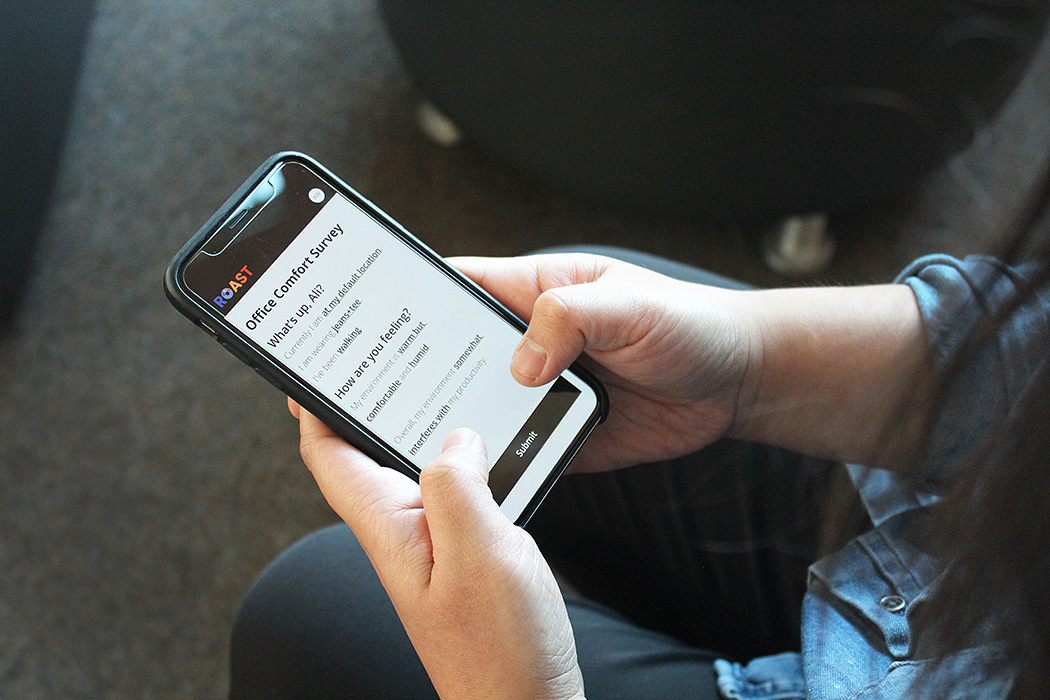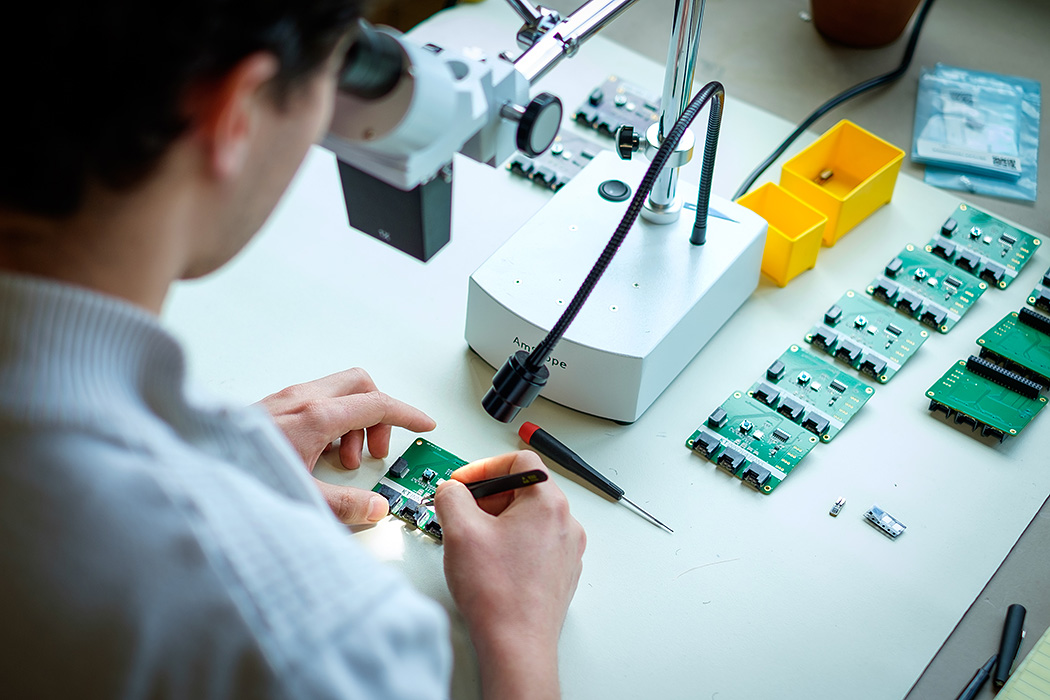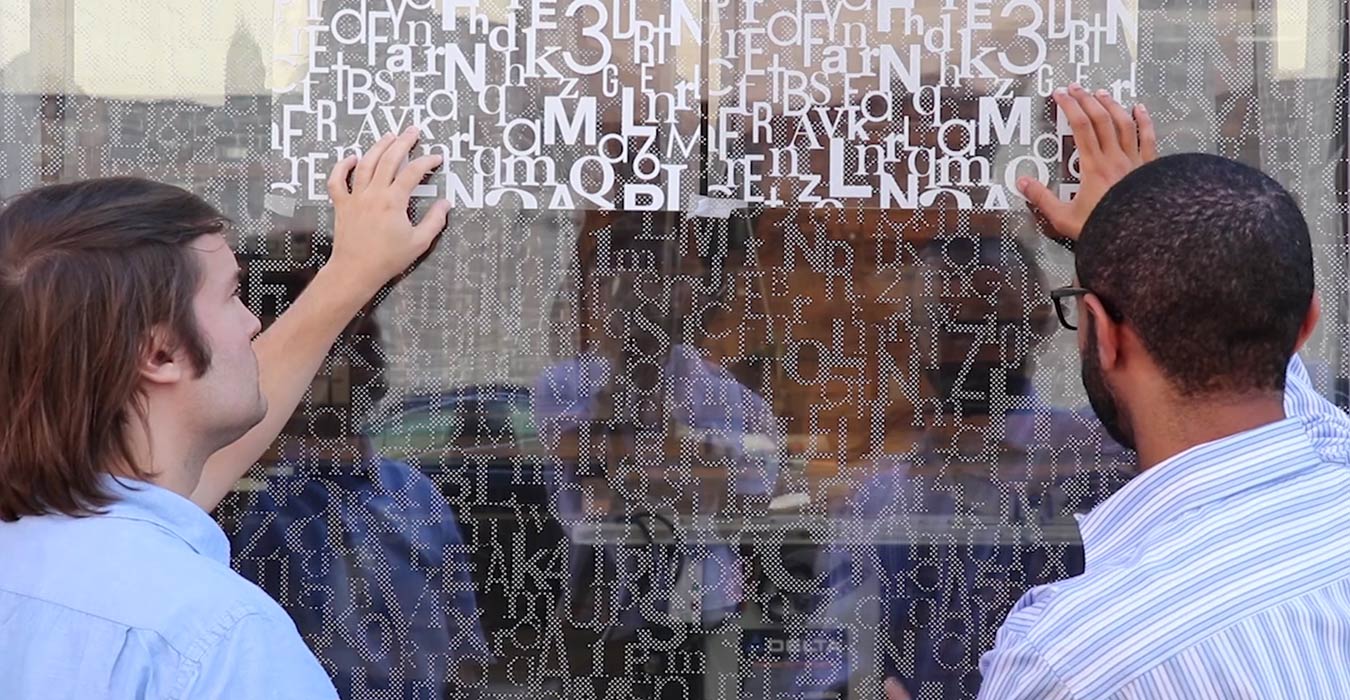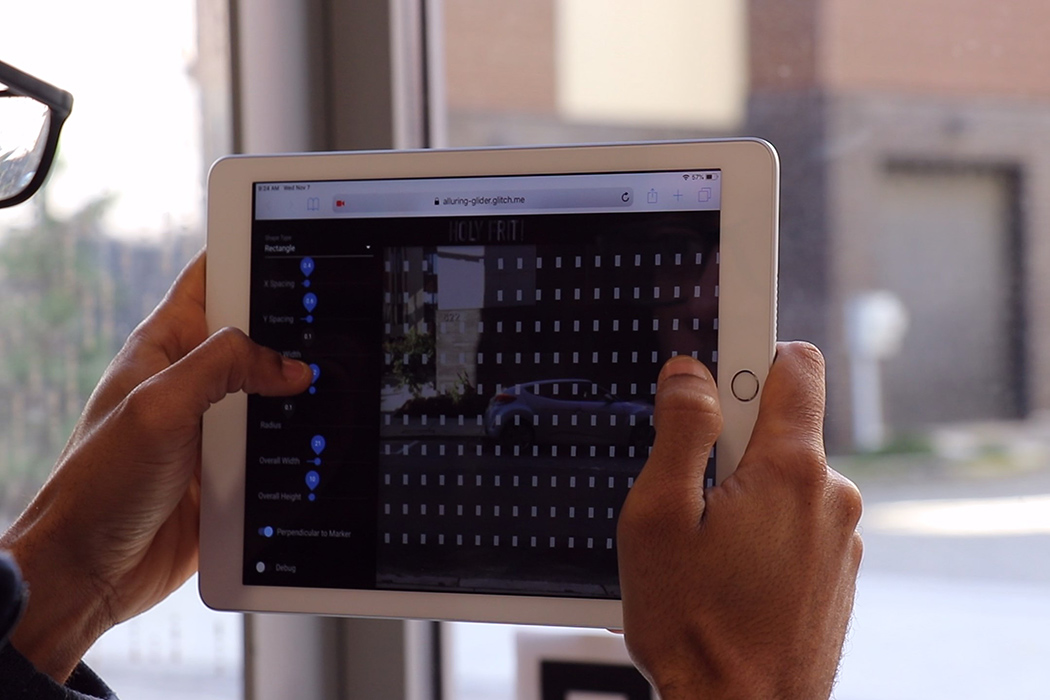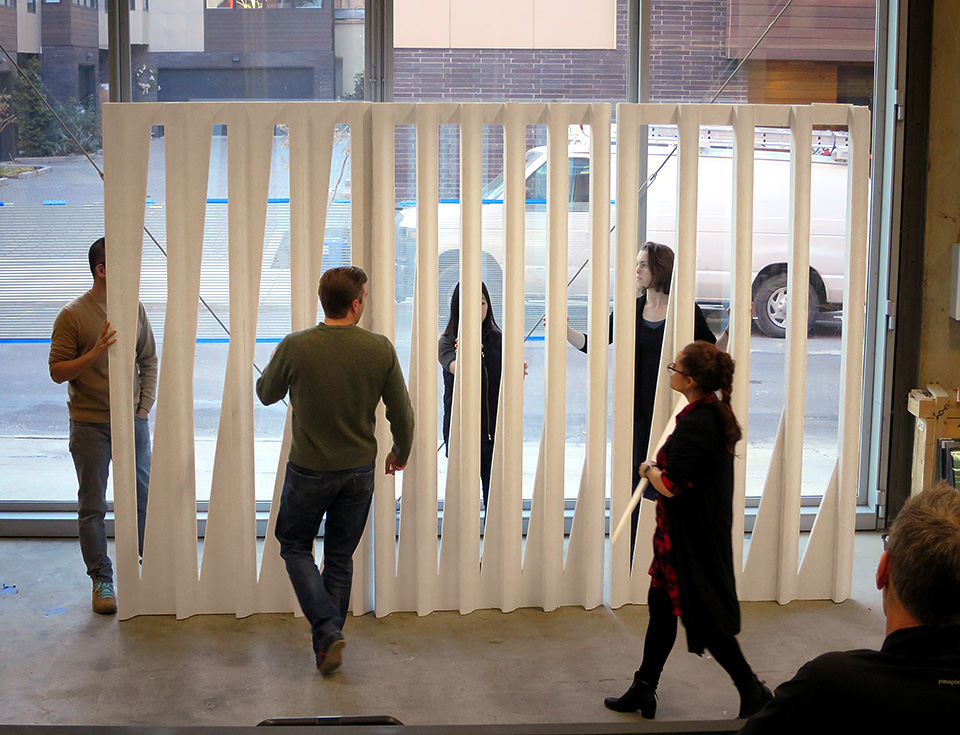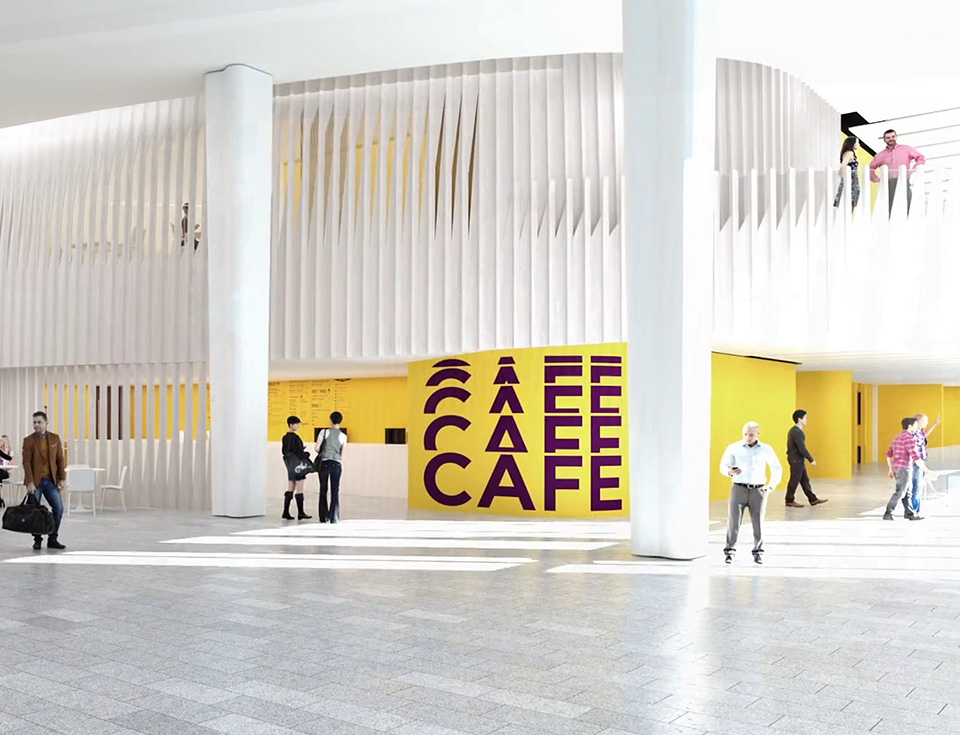In a world where more and more of the built environment is constructed using digital workflows, the ability to extend and reimagine our tools is critical. Our team of architects, coders, software developers, and graphic designers tweak and invent tools so that we can optimize our modeling processes, facilitate play and discovery, and move the architecture industry forward. These tools range from commercial software applications and scripts that automate drawing labels to create interactive design interfaces that reimagine previously static documents. In every instance, our tools and apps bring innovation and efficiency into our workflows.
Iterative Design Decisions
Tool development was especially critical during our work on Philadelphia's historic Bulletin Building. In reimagining the facade of this former newspaper headquarters, we wanted to create an alphabet patterned frit whose newspaper type paid homage to the building's history. However, we also needed to mitigate glare and unwanted solar heat gain while simultaneously creating a bird-safe design. In response, our team of architects, researchers, and graphic designers created a script that captured the character of early typeface collages but allowed the team to experiment with a range of font sizes and mixes for 13,000 letters across 300 square feet of glass. The script also helped bridge scales by automatically generating drawings for full-scale prototypes to understand how different letter densities looked close up and from afar. This tool, like many others we design, was meant not to replace our design process, but rather to augment it—by managing a variety of complex factors including density, letter size, and font mix, we were able to create a final design that was equal parts aesthetics, meaning, and performance.
While designing an alphabet-printed facade for the Bulletin Building, we used a custom script to explore multiple iterations at once and understand how the final design would look both up close and from afar.
Scripting Processes
Another project influenced by our custom tool development was 181 Mercer, a multi-purpose student life, athletics, housing, academic, and performing arts building for New York University. At the heart of this project is the Commons, which brings together NYU's diverse students and academic disciplines into an inviting central space. On either end of the Commons, our design team wanted to create a monolithic, self-supporting structure that unifies the space and brings a musical sensibility to the art-centric building. At the same time, this structure needed to accommodate the University's desire for daylight and views as well as requirements for building codes and budget. In order to meet this wide array of criteria, our team developed a workflow that allowed us to experiment with forms and shapes while acknowledging fabrication and material constraints. In this instance, our solution relied less on a single tool and more on our ability to nimbly jump between different scales and resolutions. This ability came courtesy of our interactive design tools, real-time visualization environments, and full-scale prototypes built in our shop. Throughout the process, a series of scripts guided the structure's geometry and also facilitated conversations among team members from different disciplines. These conversations have extended beyond the walls our office through our continued application development.
An Expanded Scope
While we often develop tools based on the specific needs of a project, we are deeply committed to creating applications that push the boundaries of the built environment. Thinking beyond the initial timelines of design and construction has prompted us to incorporate agile development methodologies, nurture data partnerships, and adopt cutting-edge testing workflows and expertise across both web and desktop platforms.
Our first tool to be fully commercialized, Tally allows architects and engineers to understand the embodied impacts of building materials during, rather than after, design.
For example, we partnered with thinkStep to develop Tally, a Life Cycle Assessment plugin that helps building professionals track the embodied environmental impacts of building materials during, rather than after, design. Our long history of measuring building performance over time led us to develop Pointelist and Roast, a low-cost, high-density sensor network and a web-based survey app that captures how people rate their comfort across a broad range of criteria. The lessons learned from developing applications at this scale not only influence our daily tool making, but also daylight best practices critical to the responsible evolution of the practice of architecture.
Interested in learning more about our application and tool development efforts? Click on the Related Updates below or visit our Research page to read more about on-going and completed projects.



